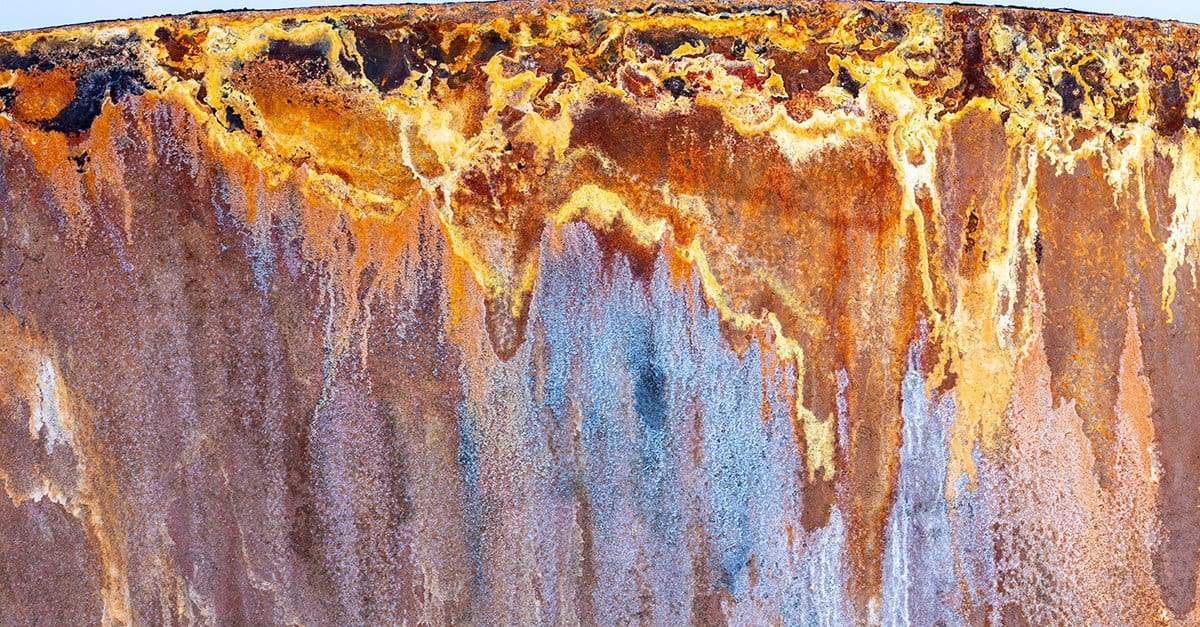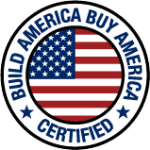Get to Know CUI and What Causes It
There are numerous causes of corrosion within piping systems, and the rate at which this phenomenon takes place is based on the factors working independently or in combination with one another.
Studies have shown that pipes left poorly or completely unprotected may experience corrosion in as little as a year. By: ABIGAIL WHITENER, Director of Marketing/New Business Development Dragon Jacket Insulation and in some cases, the insulation itself can expedite and even exacerbate the process due to its composition. Areas such as penetrations for ladders, platforms, vents, and termination points at fittings, valves, traditional pipe supports and hangers are more susceptible to channeling and collecting moisture.
Corrosion is a chemical or electrochemical process in which the deterioration of material properties is caused by adverse interactions with their environment. The majority of metals naturally exist as stable ores of oxides, carbonates or sulfides. The production of most of these metals involves adding energy to the original state, and as a result, the metal has a natural instinct to return to its original, low-energy oxide state. In order for this to happen, an electrolyte solution, or liquid water and air, is required.
The pH levels in water, water’s chemical ions will rapidly expedite the corrosion process when approximately 200 F. Oftentimes tanks are left exposed to the elements and placed on a concrete pad. Gravity pulls the moisture down to the pad, and the difference in temperature from the tank to the pad works in tandem with the concrete to act as an electrolyte that conducts currents. This results in the structural integrity of the pad, as well as the tank experiencing CUI, to be greatly diminished. Cathodic protective coatings can be used to lessen these results. However, regular inspections must be conducted, and this can become time-consuming and costly. makeup, the amount of oxygen in water, the temperature of the water and the velocity of the water are all active components in the corrosion process. (In terms of velocity, any excessive/sudden changes in direction can lead to erosion and corrosion because of water turbulence.)
The rate at which corrosion occurs is dependent not only on the nature of the environment but on the surface of the material at hand. Not all metals have a composition that leaves them as susceptible to corrosion as others. Aside from the many different factors that can cause corrosion, there are also many different types of corrosion that can occur. The most common and threatening form of corrosion is Galvanic corrosion, which is caused when two unlike metals are in contact with the presence of an electrolyte (liquid that is capable of conducting electricity, such as saltwater). This mixture acts as a catalyst for the more active metal (anode) to corrode, while the more noble metal (cathode) is protected. If the makeup of the pipe doesn’t contain any noble metals (i.e., gold, silver, platinum, etc.), then the result is both active metals corroding.

All forms of corrosion are detrimental, especially when it occurs underneath pipe insulation. This is commonly known as CUI. CUI can compromise the strength of the pipe and the efficiency of the insulation, and in some cases, the insulation itself can expedite and even exacerbate the process due to its composition. Areas such as penetrations for ladders, platforms, vents, and termination points at fittings, valves, traditional pipe supports and hangers are more susceptible to channeling and collecting moisture.
Temperature is a leading factor in corrosion. For example, if the pipe’s normal operating temperature is elevated above ambient temperature, condensation could occur during an operational pause or shutdown when the pipe’s temperature is reduced to the ambient temperature range. Condensation between the pipe and insulation can produce conditions that promote CUI. Corrosion of carbon steel is most likely to occur when the operating temperature cycles around ambient temperature or operates below dew point, and has been noted to be most severe around 200 F. Corrosion of stainless steel is most common when exposed to conditions that promote cracking, specifically chlorides. When exposed to moisture from condensation, leaks, weather or fire suppression systems, the chloride ions will rapidly expedite the corrosion process when approximately 200 F.
Oftentimes tanks are left exposed to the elements and placed on a concrete pad. Gravity pulls the moisture down to the pad, and the difference in temperature from the tank to the pad works in tandem with the concrete to act as an electrolyte that conducts currents. This results in the structural integrity of the pad, as well as the tank experiencing CUI, to be greatly diminished. Cathodic protective coatings can be used to lessen these results. However, regular inspections must be conducted, and this can become time-consuming and costly.
In order to mitigate or lessen CUI, careful consideration should go into the equipment design, specifications, installation, material of the pipe and insulation, protective coatings, weather barriers and service temperatures, as well as consistent and rigorous maintenance routines including the periodic removal of the insulation and inspection of the underlying pipe.




